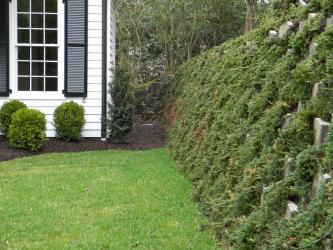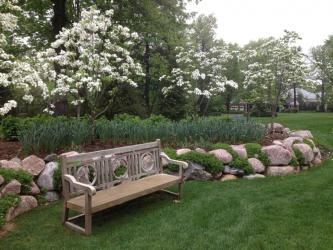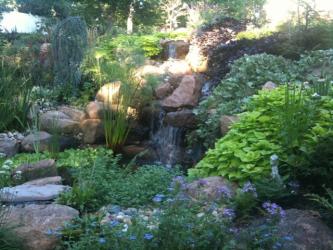Your garden no longer has to be restricted to a horizontal layout. Vertical gardens in the form of living retaining walls are an ideal way to manage grade changes on your property. Other benefits include storm water management, air quality improvement, energy savings and noise reduction. “You can plant your entire garden within the pockets of the wall,” says Mark Woolbright, owner and founder of The Living Wall Co. “Even vegetation can grow on your wall.”
With the correct planting selections, your living retaining wall will thrive. Ivy, vines, grasses and drought-tolerant plantings such as succulents are ideal for living retaining walls. Several local landscapers give the following suggestions for living walls.
Richard Poynter, Poynter Landscaping
"This photo is of a granite boulder lean wall with “Sedum Kamtschaticum” growing between the boulders. The roots spread well, but below ground, so it fills in without climbing on other plants. It is very tolerant of St. Louis weather extremes, and flowers yellow in spring and again in late summer. It stays short at 4 -6”."
Ann Lapides, Sugar Creek Gardens
"A new variety of Sedums, Cherry Tart, are ideal selections for living walls. This new cultivar offers never-before-seen cherry-red foliage and a short, compact mounded habit. It holds its red foliage color from spring through fall. Large clusters of pink flowers top the colorful leaves."
Eric Ringhofer, Green Guys
"In terms of planting, the plants need to match the environment--shady, full sun, partial sun, etc. I like to mix flowering perennials with more structural plants that help retain. I also utilize some plant specimens to draw the eye to specific points of interest. Japanese maples and a weeping atlas blue cedar are the specimens. I utilized a variety of junipers, sumac, ivy, potato vines and numerous flowering perennials to fill the gaps. Along the same lines, in this case, we built a cascading waterfall that is the showcase of this wall."











